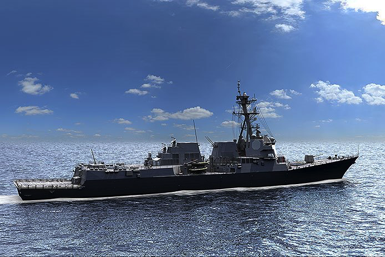Raytheon was awarded a $136 million production contract for the AN/SPY-6(V)1 Air and Missile Defense Radar (AMDR), the U.S. Navy’s next-generation integrated air and missile defense radar. The award is an option under the current low rate initial production contract and will fund the fourth “ship set” of radar mission equipment.
The AN/SPY-6(V)1 provides greater range, increased accuracy, greater resistance to environmental and man-made electronic clutter, higher reliability and better sustainability than currently deployed radars. The radar’s demonstrated sensitivity provides greater coverage for early and accurate detection, which optimizes the effectiveness of the Navy’s advanced weapons, including all variants of Standard Missile-3 and Standard Missile-6.
Since its inception in January 2014, the AMDR program has met all 20 milestones on or ahead of schedule. The radar has achieved a series of successes during the U.S. Navy’s testing program and is on schedule for delivery to the Navy’s first modernized DDG 51 Flight III, the future USS Jack H Lucas (DDG 125), in 2019.
Throughout testing at the Pacific Missile Range Facility in Hawaii, the AN/SPY-6(V)1 has proven its multi-mission capability to extend the battlespace and safeguard the fleet from multiple, simultaneous threats. The radar has demonstrated its performance against an array of single and multiple targets of increasing complexity, in dedicated flights tests and ballistic missile, satellites and aircraft targets of opportunity.
The inherent scalability of the radar — based on 2 ft. x 2 ft. x 2 ft. individual radar “building blocks,” called radar modular assemblies — allows for new instantiations without significant radar development costs. Scaled variants of the AN/SPY-6(V) include the back-fit radar for existing DDG 51 Flight IIA destroyers, the new and backfit radars for aircraft carriers and amphibious ships and the radar for the new guided-missile frigate, FFG(X).
”AN/SPY-6(V)1 milestones and test successes continue to build, proving the maturity of its design and its exceptional capabilities. Now in production, we are closer to delivering the nation’s most advanced integrated air and missile defense radar — the new cornerstone capability of the surface fleet.” — U.S. Navy Captain Seiko Okano, program manager for Above Water Sensors

